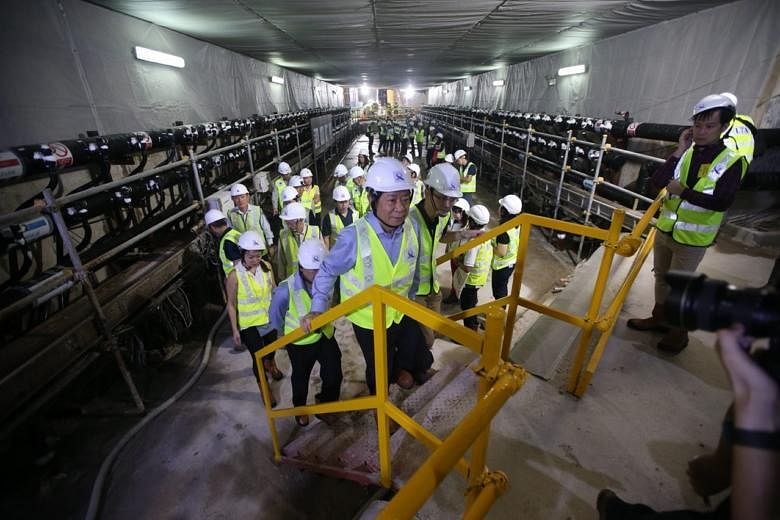SINGAPORE - For the first time, the Land Transport Authority (LTA) is using ice walls to stabilise the earth before conducting MRT tunnel excavation works.
The ground-freezing method is being employed about 40m underground for construction work at the Thomson-East Coast Line's (TEL) Marina Bay station, which is targeted to open in 2021.
It is required because the soil which workers are mining through is old alluvium, which is highly permeable and susceptible to water seepage.
Giving an update during a site visit attended by Transport Minister Khaw Boon Wan on Monday (June 25), the LTA said the ground-freezing process started in late March.
After about two months, two ice walls have been formed along a 40m stretch underground. They are about 1.8m thick and will allow excavation for the north-bound TEL tunnel to be carried out safely.
Tunnelling using excavators has started recently and a 6m stretch has been excavated so far.
The freezing was done by installing pipes into the ground and circulating chilled brine - a mixture of salt and water - with a temperature of minus 30 deg C, to allow the surrounding soil to freeze and form ice columns.
These ice columns have expanded and joined together to form a continuous ice wall, which will help prevent water seepage during mining works.
"The ground-freezing will also help ensure that works have no impact to the safe operations of the Circle Line and North-South Line tunnels located above the TEL tunnels," the LTA said.
The ice walls will be in place for about three months until the tunnel construction is completed. The freeze pipes will then be deactivated, allowing the ground to thaw.
After this, construction works for the upper east-bound TEL tunnel above will commence.
The 43km, 31-station TEL will open in stages from 2019 and is due to be fully operational by 2024.



